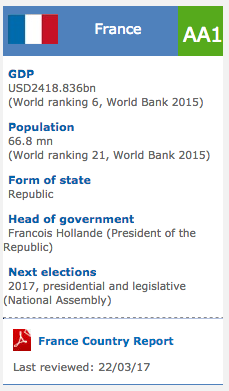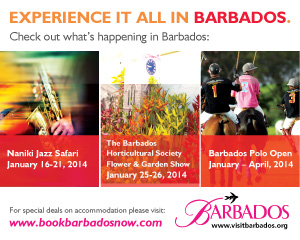Ecuador: Ecuador Art / Culture Profile 2012
2012/03/08
Ecuador Art / Culture Profile 2012
The majority of the Ecuadorian population is mestizo, a mixture of both European and Amerindian ancestry, and much like their ancestry, the national culture is also a blend of these two sources, along with influences from slaves from Africa. 90% of Ecuadorians are Roman Catholic, although their Christian beliefs are mixed with ancient indigenous customs.
Ecuador can be split up into three parts, geographically; the Costa (coast), the Sierra (Highlands) and El Oriente (the east; which includes the Amazonic region). The Galapagos islands, or Archipiélago de Colón also belong to Ecuador.
There is tension and dislike between the residents of Quito and Guayaquil. Additionally, there is centralism in these two cities, so people from other provinces also tend to dislike its residents. Furthermore, due to the at times extreme cultural difference between the Coast and the Sierra, there is a general dislike between those two regions that traces back to prehispanic times.
El Oriente is characterised by rainforest, the sierra by the snow-capped Andes, and the costa by lowlands that are highly fertile and used for agriculture, and for its beaches. The country was rich in history even before the arrival of the Inca. Ecuador was inhabited with numerous civilizations which constructed the ethnic cultural background of Ecuador years before the Incan empire. [1] Many civilization rose throughout Ecuador, such as the Chorre, and the Valdivia which span its existence before any civilization in the Americas. The most notable groups that existed in Ecuador, before, and during the Incan conquest were the Quitus (near present day Quito), the Cañari (in present day Cuenca), and the La Vegas Culture (near Guayaquil). Each civilization developed its own distinguished architecture, pottery, and religious beliefs, while others are under a disputed system of writing by archaeologist, an achievement the Incan did not achieve. After years of fierce resistance the Cañari fell to the Incan expansion, and were assimilated loosely into the Incan empire. The Inca were an advanced society. They originated in Peru, and established a great empire in one century. It dominated Peru and extended as far as Bolivia and central Chile. To communicate they made stone-highways thousands and sent messengers along them. These messengers passed each other records of the empire's status, which are disputed to have been coded in system of knots along a rope. Remarkably, the Canari, Quitus, and Caras were able to hold back Tupac-Yupanqui for years, though they proved less successful against his son, Huayna Capac. After conquering Ecuador, Huayna Capac the of the Inca Empire indoctrinated the tribes to Quechua, the language of the Incas, which is still widely spoken in Ecuador. The Cañaris were the strongest, and fierce group in Ecuador to fall, after their collapse, and assimulation, conquest of the north became easier.
In celebration of his victory, Tupac Yupanqui ordered a great city to be built at Tomebamba, near Cuenca called Pumapungo over the ancient Cañari town. When he died in 1526, Huayna Capac divided the empire between his two sons, Atahualpa and Huascar. Atahualpa ruled in the north from Quito, while Huascar ruled in the south from Cuzco. Huascar and Atuahualpa wanted all the empire, the could not share the territory, so an internal war took place. Francisco Pizarro landed in Ecuador in 1532, accompanied by 180 fully armed men, he is mission was to find gold. Several years earlier, Pizarro had made a peaceful visit to the coast, where he heard rumors in Colombia of El Dorado of inland cities which had incredible amounts of gold. This time, he intended to conquer the Incas just as Hernando Cortez did in Mexico--and he couldn't have picked a better time. Atahualpa had only recently won the war against his brother Huascar when Pizarro arrived. Pizarro ambushed the ruler, forced him to collect an enormous ransom, and then executed him. Spanish governors ruled Ecuador for nearly 300 years, first from the viceroyalty of Lima, then later from the viceroyalty of GranColombia. The Spanish introduced Roman Catholicism, colonial architecture, and today's national language. Independence was won in 1822, when the famed South American liberator Simon Bolivar joined Sucre and defeated a Spanish army at the Battle of Pichincha.
Regionalism
Regionalism is the most destructive force that has continue to hit Ecuador since the rise of segregated towns. Each region is divided between different, and unique topographic geography creating a sense of individual pride of their side. The most notable regional competition or confrontation is between Guayaquileños, and Quiteños. This sense of regionalism has created many barriers between people that has always had a strong affect in the country. Due to regionalism the economy suffered severely since one side hesitates in expanding to another. During War regionalism was visibly lossened, but there are significant reports in which such boundaries ended in individuals betraying their country due to their emotional sense of seeing the other region lose, an example was the case of reports that someone had given information to the enemy on troops during Tawantinzuma. Most of the regional fighting occurs among teenagers, and college students.
Family
Ecuadorians place great importance on the family, both nuclear and extended. Unlike in much of the West, where the elderly are often placed in care facilities geared towards people of advanced age, elderly Ecuadorians will often live with one of their children. However, in recent years the number of facilities to care for the elderly has grown significantly.
Godparents are also far more important in Ecuador than in the West, and they are expected to provide both financial and psychological support to their godchildren. For example, Ecuadorians with marital troubles will often ask their godparents for advice. Families are formed in at least one of the following two ways: Civil Marriage (which is the legal form of formalising a bond between a man and a woman and which all married couples are required to undergo and the Free Union (where a man and a woman decide to form a family without undergoing any official ceremony). The Ecuadorian Constitution accords the members of a Free Union family the same rights and duties as in any other legally constituted family.
It is important to note that there are many variations in family structure, as well as in the social and cultural structure in Ecuador depending on the socioeconomic position in which people live. Generally the upper classes adopt more of the American or European ways of life. This leads to great contrasts within the Ecuadorian people.
Women
Women are generally responsible for the upbringing and care of children in Ecuador, and traditionally, men have taken a less active role in this area, though recently this has begun to change, with many men doing housework and caring for children when women work away from home. Since 1906 with Eloy Alfaro's liberal revolution, Ecuadorian women gained the right to vote and work.
Girls tend to be more protected by their parents than boys, due to traditional social structures. At 15, girls often have large parties, with its most important aspects being food and dancing. This is a tradition present in most Latin American countries, and is similar to sweet sixteen parties in the US.
Sports and Entertainment
As with almost all of Latin America, Ecuadorians are ardent fútbol fans, and the national team has shown some successes in international tournaments of the sport in the last few years - for the first time in history it won a place in the World Cup Tournament (the 2002 event hosted by Japan and South Korea). Ecuador achieved a historic feat in Germany 2006 by reaching the knock out stages for the very first time. However, they lost to England on a famous Beckham free kick that put Ecuador out of the tournament. Nevertheless, Ecuadorians are prideful of their soccer team and highly celebrate its victories regardless of how small these are.
Alongside soccer, volleyball is also common, though it is played differently to Western volleyball. The ball is much heavier and there are only three players per team. Volleyball is mostly informally played by both young students and middle aged people alike. Their form of volleyball is called "Ecuavoli" and has more flexible rules. For example, when playing Ecuavoli, you don't have to keep your hands together or clenched.
Bullfighting, a legacy of Spanish colonisation, is held annually at a large festival in Quito, but it's not popular nation-wide. During December, the inhabitants of Quito celebrate its Foundation Day, which includes a grand celebration lasting for days, called Las fiestas de Quito. The high point of the fiestas is the Corrida de Toros, in which internationally renowned bull fighters are invited to show off their prowess in the arena.
In athletics, Jefferson Pérez gave Ecuador its first ever Olympic gold medal in 1996 in speed walking.
Other forms of entertainment popular worldwide are found in Ecuador also, including darts and a variety of card games for adults and marbles, hopscotch and skipping ropes are popular pastimes for children. Carnivals and festivals are also varied through the country and highly expected by the population, usually featuring many traditional games and fun. Some parts celebrate mask carnivals, while others have no official customs, yet all of them are related to a mixture of amerindian and Catholic beliefs.
Fishing, especially for the enormous bagre catfish, which is found at the bottom of rivers and can weigh up to 100 kg, is very popular. Bull sharks are often caught in rivers also.
Also, the majority of the movies shown in movie theatres in Ecuador come from the United States. The movies are often in English and have Spanish subtitles, but are sometimes translated for family movies.
Cuisine
An Ecuadorian's day, at least as far as his or her diet is concerned, is centred around lunch, rather than dinner as in Western cultures. Sometimes it is the only main dish in their diet.
There is no one food that is especially Ecuadorian, as cuisine varies from region to region of the country. For example, costeños (people from the coast) prefer fish, beans and plantains (unripened banana like fruits), while serranos from the mountainous regions prefer meat, rices and white hominy mote.
Some examples of Ecuadorian cuisine in general include patacones, unripe plantains fried in oil, mashed up and then refried, llapingachos, a pan seared potato ball, and seco de chivo, a type of stew made from goat. More regionalized examples include ceviches from the Coast, which are different from other ceviches and traditionally is served unprepared, as well as almidon breads, plantains served with crushed peanuts or salprieta, and encebollado, the most popular dish in the Coast, that contains a marinade with large chunks of fish, onions and various regional seasonings.
Beef Jerky comes from the word in the ancient incan language in Quechua. "Charqui"
Language
Most Ecuadorians speak Spanish, though many speak Amerindian languages such as Kichwa, the Ecuadorian dialect of Quechua. Other Amerindian languages spoken in Ecuador include Awapit (spoken by the Awá), A'ingae (spoken by the Cofan), Shuar Chicham (spoken by the Shuar), Achuar-Shiwiar (spoken by the Achuar and the Shiwiar), Cha'palaachi (spoken by the Chachi), Tsa'fiki (spoken by the Tsáchila), Paicoca (spoken by the Siona and Secoya) and Wao Tededo (spoken by the Waorani).
Though most features of Ecuadorian Spanish are universal in the Spanish-speaking world, there are several idiosyncrasies.
Costeños tend to speak more quickly and louder than serranos, and most of them do so in a very informal way. A common term costeños use to call each other is mijo, a portmanteau of sorts for "my son" (mi hijo). Several such terms originate from their fast speech, and they have intrincate language humor and jokes, difficult to translate or even understand in other regions. Also, each coaprovince has a different variety of accent with specific different terms.
Serranos usually speak softly, and very respectfully. Traditionally they are seen as more conservative, and use a number of Kichwa-originated terms in their everyday speech, often puzzling to other regions. A widely known example is the word guagua, which means child in Kichwa. Their speech comes from their Incan amerindian roots and can be seen as a variation of other Andean accents.
Whistling, yelling or yawning to get someone's attention is considered rude, yet informally done.
Art and Literature
Graffiti is integral to the urban culture of Quito. Nearly every wall of the city was covered in it, leading to the rise of the saying "No wall is blank in Quito". However, this has reduced giving the city a much cleaner look, and reducing the gangs in Quito. Graffiti has spread to other provinces, and is usually artistic or political, and often poetic.
Music is very important in Ecuador, with differences between Coast and Highlands. Generally, pan pipes, flutes of bamboo, violins, drums and charangos all played often, but with different purposes. For instance, in the Sierra popular tunes played at fiestas include "Rosa Maria" and "El Condor Pasa", with sanjuanito being an easily recognizable genre. In the Costa, the instruments are played mostly for cumbia, salsa, and pasillos. Costeños have two kinds of purposes for music, the rhythm-filled one which is played in most places, be it in public like in the bus or in parties, and the slow, moarnful pasillos and rocolas, which are exclusive to old bars. The slow tunes are humoristically known as cortavenísticos ("vein-cutting") because of their overall sadness.
Ambato, a city in central Ecuador, is known as the "City of the three Juanes", with Juan Montalvo (a novelist and essayist), Juan León Mera (author of the words to Ecuador's national anthem, "Salve, Oh Patria") and Juan Benigo Vela (another novelist and essayist) all sharing it as a place of birth. Other important writers include Eugenio Espejo, from colonial Quito, whose works inspired the fight for freedom from Spain in Ecuador and touched a number of topics, and novelist and poet Horacio Hidrovo Velásquez, from early century's Manabí, whose works have inspired films.
Music and Races
In addition to the numerous native cultures, Ecuador is home to a Mestizo culture, and a sizable Afro-Ecuadorian culture (approximately a half-million), "In the mid-16th century, at least two slave ships from Panama bound for Peru wrecked on the shores of what is now Esmeraldas province. The African slaves established a maroon society (freed slaves), and maintained autonomy during much of the colonial era". Today's Afro-Ecuadorians are famous for their marimba music and dance festivals. Long before the Spanish conquest, and even much before the Inca civilization, the diverse native cultures of the region had rich musical traditions. Ancient flutes, trumpets, drums, and other musical artifacts have been found in tombs. Music was obviously important in the human and supernatural worlds of ancient Andean people.
With the coming of the Spanish conquerors in the 16th century, accompanied by Catholic missionaries and African slaves, additional musical languages were introduced. Today, three principal racial and cultural strains - Indigenous, Spanish, and African - have evolved into distinctive musical styles. El Pasillo is slow, sad music that is played mainly with the guitar and rondin, a flute-like instrument consisting of several pipes. The El Pasacalle type of music has an upbeat rhythm and is excellent for dancing. El Yarabi is the most popular of the music from the Andes. It is very sentimental and great for listening.
- Ecuador News
-
- ISRAEL: Netanyahu’s Historic Latin American Tour to Highlight Israeli Tech Sector
- ISRAEL: PM Netanyahu leaves on historic visit to Latin America
- AFGHANISTAN: UNWTO: International tourism – strongest half-year results since 2010
- AFGHANISTAN: Higher earning Why a university degree is worth more in some countries than others
- ARGENTINA: China looks to deepen ties with Latin America
- ECUADOR: Guayaquil real estate Big construction projects to substantially improve quality of life
- Trending Articles
-
- SOUTH AFRICA: Nigeria and South Africa emerge from recession
- EUROPE: Ball Corporation Debuts Three New Aluminium Beverage Can Sizes
- UZBEKISTAN: Former deputy PM named Uzbekistan Airways head
- AUSTRALIA: Western Australia joins two-thirds of country to ban fracking
- WORLD: How fair is our food? Big companies take reins on sourcing schemes
- BAHRAIN: Bahrain issues new rules to encourage fintech growth












